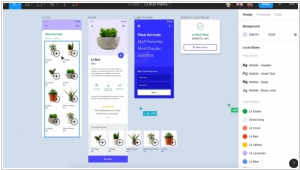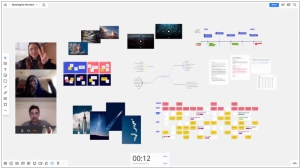Figma vs Miro
September 19, 2023 | Author: Adam Levine
Figma and Miro are both popular online collaborative tools used for visual collaboration, but they serve different purposes and have some key differences:
Design vs. Collaboration: Figma is primarily a design tool, used for creating user interfaces, wireframes, and other design assets. It is specifically focused on design and prototyping workflows, with features such as vector editing, design components, and design libraries. Miro, on the other hand, is a collaborative online whiteboard platform that is designed for team collaboration, ideation, and visual communication. It is more focused on facilitating collaboration and brainstorming among team members in real-time, with features such as virtual whiteboards, sticky notes, diagrams, and templates.
Design Features vs. Collaborative Features: Figma offers a rich set of design features such as vector editing, design components, design libraries, prototyping, and design handoff to developers. It is optimized for design workflows and provides a robust set of tools for designers to create visual assets. Miro, on the other hand, offers collaborative features such as virtual whiteboards, sticky notes, diagrams, mind maps, voting, and commenting. It is designed to enable real-time collaboration and visual communication among team members.
Integration with Other Tools: Figma has integrations with various design tools, prototyping tools, and project management tools, making it easy to collaborate and handoff design assets to other stakeholders in the design and development process. Miro, on the other hand, has integrations with various collaboration and project management tools, making it easy to incorporate visual collaboration into existing team workflows.
User Interface and Workflows: Figma has a user-friendly interface that is optimized for design workflows, with a focus on visual design tools and design components. It is often used by designers and design teams for creating UI/UX design assets. Miro, on the other hand, has a visual and collaborative interface that is optimized for team collaboration, with a focus on virtual whiteboards, sticky notes, and visual communication. It is often used by cross-functional teams for brainstorming, ideation, and collaborative problem-solving.
Pricing: Figma and Miro have different pricing models. Figma offers both free and paid plans, with additional features and collaboration options available in paid plans. Miro also offers both free and paid plans, with additional features and team collaboration options available in paid plans. Pricing plans for both Figma and Miro may vary based on the size of the team and specific features required.
Use Cases: Figma is commonly used by design teams for creating user interfaces, wireframes, and other design assets, while Miro is commonly used by cross-functional teams for brainstorming, ideation, visual communication, and collaborative problem-solving. Figma is more focused on the design and prototyping workflows, while Miro is more focused on team collaboration and visual communication.
In summary, the main differences between Figma and Miro include their primary focus (design vs collaboration), the features they offer (design vs collaborative), integration with other tools, user interface and workflows, pricing, and common use cases. Organizations should consider their specific needs and requirements when choosing between Figma and Miro for their visual collaboration needs.
See also: Top 10 Visual Collaboration software
Design vs. Collaboration: Figma is primarily a design tool, used for creating user interfaces, wireframes, and other design assets. It is specifically focused on design and prototyping workflows, with features such as vector editing, design components, and design libraries. Miro, on the other hand, is a collaborative online whiteboard platform that is designed for team collaboration, ideation, and visual communication. It is more focused on facilitating collaboration and brainstorming among team members in real-time, with features such as virtual whiteboards, sticky notes, diagrams, and templates.
Design Features vs. Collaborative Features: Figma offers a rich set of design features such as vector editing, design components, design libraries, prototyping, and design handoff to developers. It is optimized for design workflows and provides a robust set of tools for designers to create visual assets. Miro, on the other hand, offers collaborative features such as virtual whiteboards, sticky notes, diagrams, mind maps, voting, and commenting. It is designed to enable real-time collaboration and visual communication among team members.
Integration with Other Tools: Figma has integrations with various design tools, prototyping tools, and project management tools, making it easy to collaborate and handoff design assets to other stakeholders in the design and development process. Miro, on the other hand, has integrations with various collaboration and project management tools, making it easy to incorporate visual collaboration into existing team workflows.
User Interface and Workflows: Figma has a user-friendly interface that is optimized for design workflows, with a focus on visual design tools and design components. It is often used by designers and design teams for creating UI/UX design assets. Miro, on the other hand, has a visual and collaborative interface that is optimized for team collaboration, with a focus on virtual whiteboards, sticky notes, and visual communication. It is often used by cross-functional teams for brainstorming, ideation, and collaborative problem-solving.
Pricing: Figma and Miro have different pricing models. Figma offers both free and paid plans, with additional features and collaboration options available in paid plans. Miro also offers both free and paid plans, with additional features and team collaboration options available in paid plans. Pricing plans for both Figma and Miro may vary based on the size of the team and specific features required.
Use Cases: Figma is commonly used by design teams for creating user interfaces, wireframes, and other design assets, while Miro is commonly used by cross-functional teams for brainstorming, ideation, visual communication, and collaborative problem-solving. Figma is more focused on the design and prototyping workflows, while Miro is more focused on team collaboration and visual communication.
In summary, the main differences between Figma and Miro include their primary focus (design vs collaboration), the features they offer (design vs collaborative), integration with other tools, user interface and workflows, pricing, and common use cases. Organizations should consider their specific needs and requirements when choosing between Figma and Miro for their visual collaboration needs.
See also: Top 10 Visual Collaboration software
Figma vs Miro in our news:
2023. Adobe and Figma end $20B acquisition plans after regulatory headwinds in Europe
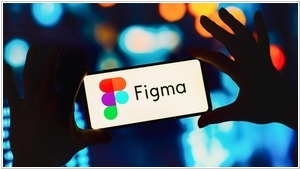
Adobe's $20 billion acquisition of rival Figma has officially collapsed, as the companies cited regulatory challenges in Europe as the decisive factor leading to the abandonment of the deal. Initially revealed in September of the previous year, the significant size of the transaction and the elimination of one of Adobe's key competitors made it susceptible to regulatory scrutiny. Throughout 2023, the U.S. Department of Justice (DOJ) closely examined the deal, although no formal lawsuit had been filed to prevent its completion. In a final effort to avoid legal action, Adobe and Figma engaged in discussions with the DOJ before the weekend, ultimately resulting in the termination of the acquisition plans.
2022. Adobe snaps up Figma for $20B

Adobe has recently announced its acquisition of Figma for a staggering $20 billion. Figma has gained popularity among individuals and teams due to its streamlined and modern cloud-based environment for design and prototyping. With approximately 4 million users to date, Figma has established itself as a prominent player in the industry. On the other hand, Adobe has been actively expanding its presence in the digital creation space through both internal developments and acquisitions. This expansion has taken Adobe beyond design and into marketing and other interconnected areas in the creation process. Design has always been at the core of Adobe's DNA, evident in their iconic products such as Photoshop, fonts, illustration, video, and 3D tools. The strategic vision behind the acquisition is to seamlessly integrate these Adobe products with Figma, positioning Figma as the native platform that unifies all of them. Adobe already had a similar offering in the form of AdobeXD, but the acquisition of Figma further strengthens its position in the design ecosystem.
2021. Figma introduces a whiteboard tool called FigJam
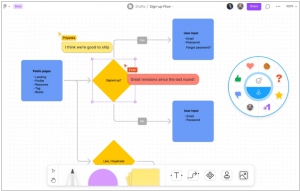
Figma, the online collaborative design service, has unveiled FigJam, a new whiteboarding tool aimed at fostering teamwork. FigJam goes beyond providing designers with a space to generate ideas collectively; it also enables nondesigners to actively participate in the brainstorming process. The tool offers a range of features, including sticky notes, emojis, drawing tools, shapes, pre-built lines and connectors, stamps, and cursor chats. Integration with Figma ensures smooth transitions as components or design objects created in FigJam can easily be transferred to Figma. Additionally, Figma is introducing voice chat functionality across all its products. This allows users collaborating on designs in Figma or engaging in brainstorming sessions in FigJam to communicate via audio without the need for separate Zoom or Google Meet calls—simply toggling on chat in Figma facilitates seamless audio communication.
2020. Design platform Figma raises $50 million
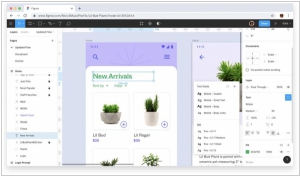
Figma, the design platform renowned for its collaborative and cloud-based approach, has recently concluded a successful Series D financing round, raising $50 million. After nearly six years of development in stealth mode, Figma was launched in 2015 with the vision of creating a collaborative design tool that functions similarly to Google Docs. Since its inception, Figma has continued to enhance its platform, focusing on expanding accessibility and usability for individual designers, small firms, and large enterprise companies. Additionally, the company introduced an educational platform called Community, empowering designers to share their work and enabling users to "remix" designs or explore them layer by layer.
2020. Miro lands $50M Series B for digital whiteboard as demand surges
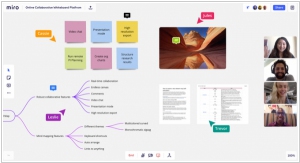
Miro, the creator of a digital whiteboard, is experiencing a significant surge in usage as businesses transition from physical workspaces to remote environments. In light of this, the company has recently announced an impressive $50 million Series B funding round. Miro sets itself apart by being more than just a lightweight add-in typically found in collaboration tools like Zoom or Microsoft Teams. It functions as a platform that integrates with various enterprise tools, much like Slack does for communication. This integration capability allows users to customize the base tool and build integrations with other commonly used tools, tailoring it to the specific needs of their teams or organizations. This approach has proven successful, with Miro reporting profitability and boasting more than 21,000 customers, including 80% of the Fortune 100 companies. Notable customers of Miro include Netflix, Salesforce, PwC, Spotify, Expedia, and Deloitte.
2019. Online design tool Figma gets new enterprise collaboration features
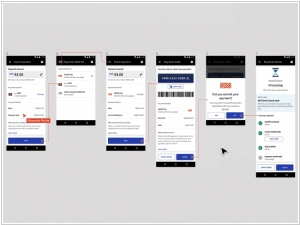
Figma, the web-based design and prototyping tool aiming to provide an alternative to similar tools like Adobe, is introducing a range of new features today to enhance collaboration across teams within large organizations. Known as Figma Organization, this feature set represents the company's first enterprise-grade service, incorporating controls and security tools that are essential for large companies. One notable addition for designers is the introduction of organization-wide design systems. While Figma already offered tools for creating design systems, this enterprise version simplifies the process of sharing libraries and fonts among teams. This ensures consistent application of styles across a company's products and services.
2018. RealtimeBoard, a visual collaboration platform for companies, raises $25M
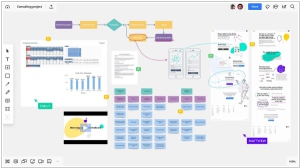
RealtimeBoard, an effective visual collaboration tool designed for distributed teams, has secured $25 million in Series A funding. The company intends to utilize the additional investment to support its ongoing expansion efforts. This includes enhancing customer acquisition capabilities through the strengthening of sales and marketing teams, as well as fostering growth within its user community. RealtimeBoard aims to develop a comprehensive visual collaboration platform that facilitates digital whiteboarding and serves as a central hub for integrating various collaboration tools utilized by organizations. Notable companies such as Hubspot, Skyscanner, Qlik, Autodesk, Netflix, and Twitter are among RealtimeBoard's esteemed customers, with the platform boasting a user base of 2 million worldwide. The startup generates revenue by offering its software-as-a-service (SaaS) on a per-seat basis for teams or entire companies.

